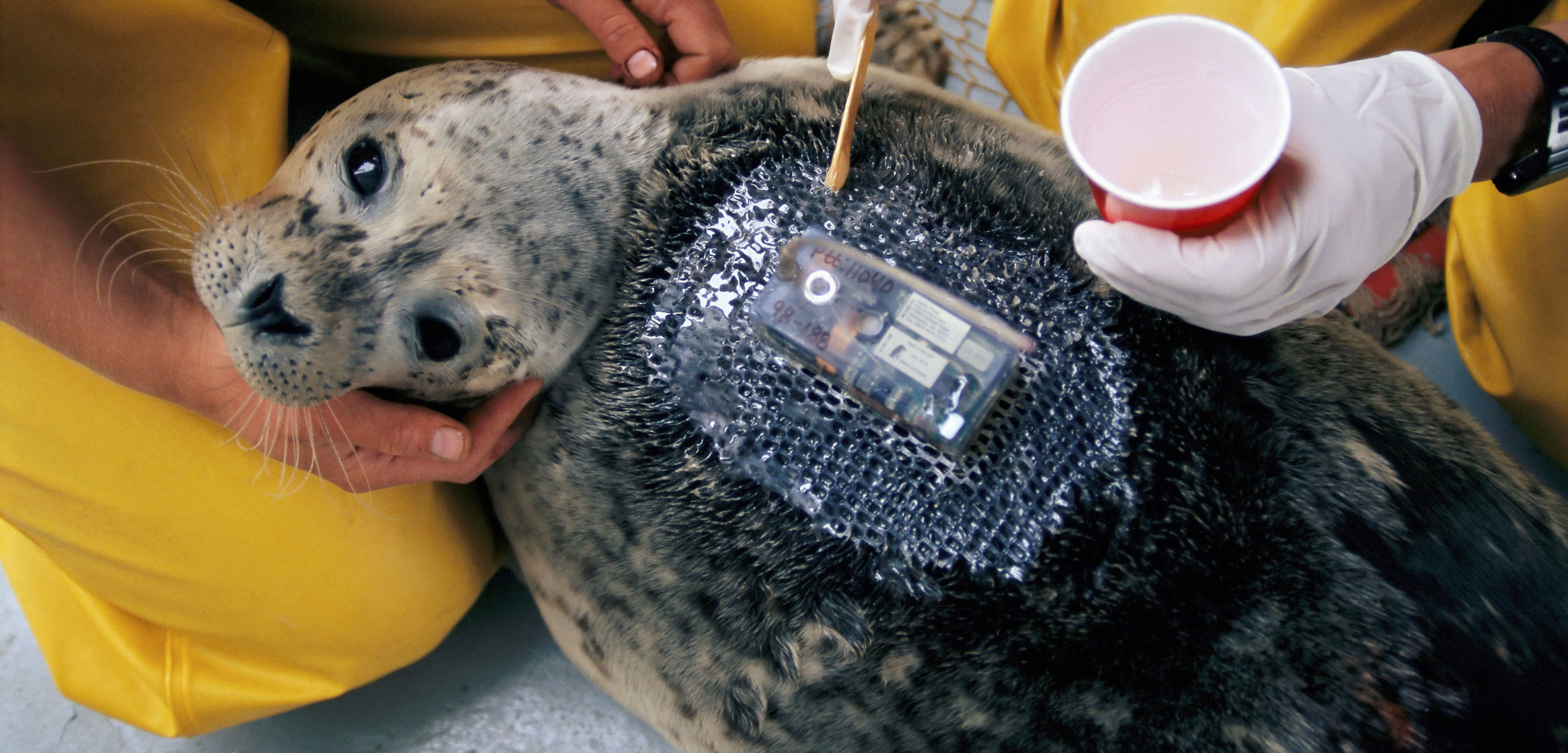Are Scientific Tracking Tags Hurting Wild Animals?
New research shows telemetry tags may force seals to work harder and swim slower.
Article body copy
It’s a frustrating scenario for wildlife biologists: an animal almost hunted to extinction rebounds nicely, then its recovery mysteriously stops. What gives? But in trying to answer that question, biologists have discovered another frustrating conundrum: could the technology being used to study the animals actually be doing harm as well as good.
For the past couple of decades, marine biologists have been tracking wild northern fur seals. Native to the North Pacific, northern fur seals were hunted for their luxurious pelts from the 1700s until their population crashed in the early 1900s. After the United States set hunting restrictions, the population recovered, but in the 1970s numbers started declining again.
“Over about the last 15 or 20 years the population’s been going down at about six percent per year,” says David Rosen, a marine biologist at the University of British Columbia.
To solve the mystery, scientists turned to satellite tags to track the fur seals’ movements across the ocean. By affixing tracking tags to animals, researchers can virtually dive, hunt, and migrate with wildlife they could never otherwise follow, and collect invaluable data. The tags are giving scientists insight into life and death mysteries, including possible causes of the population’s decline.
But Rosen, along with many other scientists, wondered if these tags were having their own effect. Does wearing a jutting, butter-pat-sized tag slow down a smooth, sleek fur seal? Does it hurt its chances of eluding predators? Do potential mates find tags to be a turnoff, and so mate less with tagged fur seals? And if so, could that also be biasing scientists’ data?
For answers, Rosen needed to measure exactly how much energy a fur seal spends swimming with and without a tag. So he approached the Vancouver Aquarium, where five trained fur seals help researchers answer questions just like this one.
A fur seal outfitted with a GoPro does a lap in a research pool. By recording seals swimming with and without tags, scientists calculated how much energy the tags cost the animal. Video courtesy of the Vancouver Aquarium
In the experiments, a trained fur seal swam a circuit with and without a telemetry tag, while researchers measured the components of its breath to gauge energy expenditure. The trials showed that fur seals take longer to swim the course, and spend more energy doing it, with a tag than without.
It’s as if an Olympic swimmer suddenly had to wear baggy board shorts, Rosen says. “They have two choices: they can work harder, or they can slow down.” The fur seals in the pool did a little bit of both, swimming three to six percent slower, and expending 12 to 19 percent more energy.
But are wild animals—similarly outfitted with tracking tags—suffering the same energetic toll? According to researchers with the US National Oceanic and Atmospheric Administration (NOAA) who used tags on fur seals in the Bering Sea, the answer is no.
NOAA marine biologist Tom Gelatt, who led that research, says it’s a big leap to extrapolate from the short-term effects of a tagged fur seal in a pool to long-term impacts on wild fur seals. Gelatt says several studies on wild fur seals suggest the animals adapt to the tags over time. Research from 2002 found that tagged and untagged females spent the same amount of time foraging at sea and on land, suggesting the tagged fur seals weren’t hindered in their daily activities. Gelatt also points to other studies showing no effect of the tags on the fur seals’ behavior. For instance, tagged fur seals seem to care for their pups just fine during the breeding season.
“We feel that any effects of tags are minimal to negligible,” Gelatt said in a written response.
Yet Rosen thinks that data from the wild is less precise than that from a research pool. But he concedes his new study in captivity has its own caveat, and a big one—time. “These were short-term deployments,” he says. “What happens in the long-term?”
The question of if and how fur seals adapt to tracking tags remains open.
In the end, both Rosen and Gelatt agree that the data gathered from tagging studies is invaluable to help protect a species whose population is dwindling. But it will take more work to find out whether wild fur seals are paying a price for that insight.

